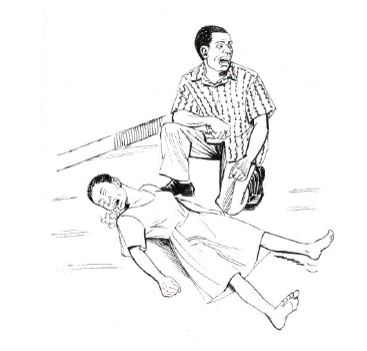Any damage to the brain has the potential to cause seizures. Damage is commonly from head injuries (an accident, during childbirth) or infections (HIV, malaria). There is often a family history or genetic component. It is not caused by spirits or witchcraft!
|
IMPORTANT: Sometimes a seizure is related to a temporary condition, such as exposure to drugs, withdrawal from certain drugs and alcohol, a high fever or abnormal levels of sodium or glucose in the blood. If the seizure or seizures do not happen again once the underlying problem is corrected, the person does not have epilepsy. |
